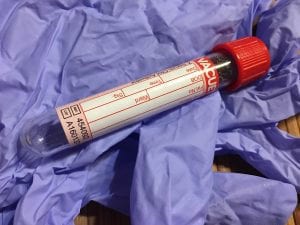Albireo Pharma Inc. has just announced the results from their Phase 1 clinical trial for A3907, an ASBT inhibitor. The study produced positive results, achieving its primary and secondary endpoints. Researchers are hopeful it could become a new therapeutic option for adult cholestatic liver diseases.
Cholestatic Adult Liver Diseases
This group of conditions is characterized by symptoms such as fatigue, jaundice, cirrhosis complications, pruritus and more. The two most common of these liver diseases are primary sclerosis cholangitis (PSC) and primary biliary cholangitis (PBC).
PBC leads to chronic damage in the bile ducts within the liver. This leads to a back up of bile in the organ which causes cirrhosis (scarring of the liver tissue).
PSC also impacts the bile ducts. Inflammation leads to scarring in the ducts, narrowing them, and ultimately causing severe liver damage. It can cause infection, tumors, and ultimately, liver failure.
A3907
A3907 is an apical sodium-dependent bile acid transporter (ASBT) inhibitor. It’s the first ASBT inhibitor which has a high oral bioavailability.
It is able to inhibit the ASBT both in the kidneys and in the intestines which means it can accelerate elimination of bile acid through the urine and through fecal excretion. This dual pathway means it can essentially duplicate the efficacy of the treatment.
Researchers are investigating the potential of this therapy for PSC, PBC, and other cholestatic liver diseases which affect adults.
The Study
This study was a Phase 1 investigation which was placebo-controlled, double-blind, and randomized. The trial included two groups, one which was administered a single ascending dose (1-62mg for 54 weeks), and one which was administered multiple ascending dose (9-67.5mg for 22 weeks).
The primary endpoints of this trial were tolerability and safety. Both of these primary endpoints were met as no serious AEs were documented. Additionally, no patients discontinued their treatment due to AEs and all patients finished the full trial. Further, all of the AEs related to the treatment were found to be mild, most of which were GI.
Also examined were pharmacokinetics and a few exploratory variables. Dose-related plasma exposure was found to be similar to what had previously been uncovered in animal models. One dose of the treatment led to a dose proportional increase in the plasma exposure.
The researchers are excited by these results and looking forward to beginning a Phase 2 examination. This therapy could be more efficacious, and just as safe, as current treatments.
You can read more about this therapy and its potential here.







